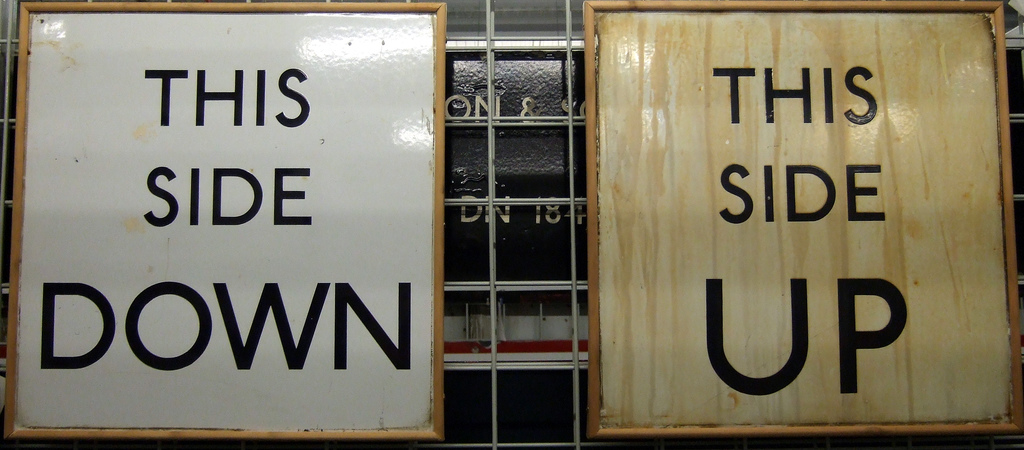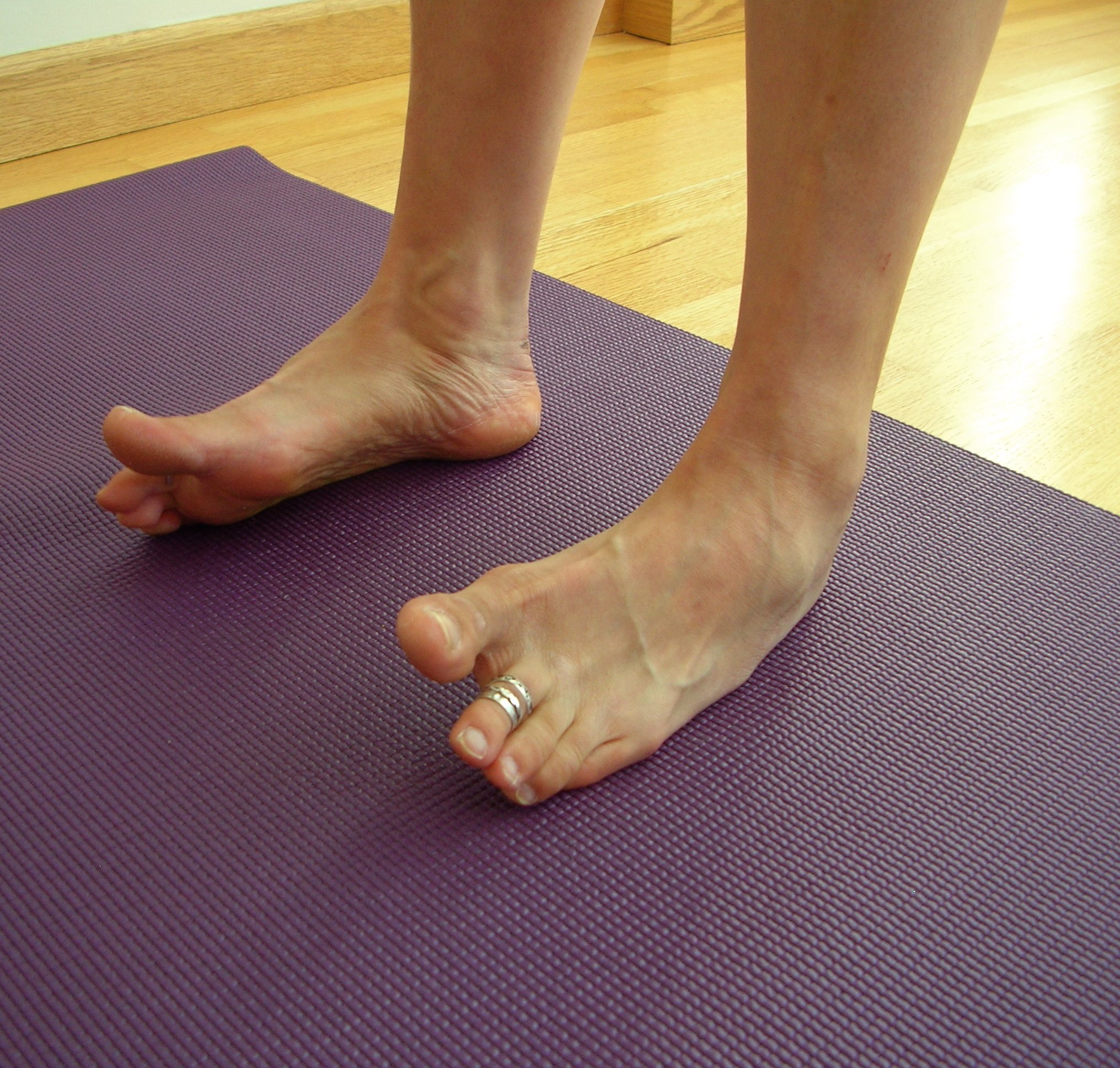I’m so much in agreement that I’m considering putting an elastic band on my wrist and snapping it, gently, of course, every time I hear myself say: “now we’re going to . . . ”
But we parted ways when Myhre suggested that yoga teachers cleanse the word “down” from their vocabularies.
After citing a number of instances such as “down-hearted,” “down in the dumps,” “down at the mouth,” and for computers, just “down,” she writes:
Is “down” a seed we want to plant in our students minds? Is “down” a samskara we want in our own heads? Is “down” confident? Is it uplifted, high, vitalized, soaring, and joyful? The ubiquitous “down” needs an overhaul.
Oh, not so fast.
True, there’s no need to say: “press your hands down into the floor,” when you can’t possibly press them up.
But that doesn’t make “down” dispensable.
Philosophically, up and down, like all opposites, are two sides of the same coin. Without a down, there is no up.
We might prefer the bright, sunny, exuberant feelings associated with “up,” but as a direction, it’s no more inherently good than down is bad.
And in practical terms, the down usually has to come first, as in this week’s Five-Minute Yoga Challenge: press down into your big toe mounds and outer arches in order to lift your inner ankles.
How pleasant then, to learn that our word “down” comes from the Old English word dun, meaning “down, moor, height, hill, mountain.”
You can, for example, go for a hike and be “up on the downs.”
And at first, when you weren’t on the downs, you were “ofdune,” meaning “from the hill.”
Gradually the “of” was dropped, and the meaning of “down” migrated into its opposite, collecting a host of negative, and only a few positive associations, such as the relaxed and peaceful “settle down” and “calm down.”
What a downer.
To feel the uplifting power of down in standing poses, try this: Stand in Tadasana (mountain pose) with your feet hip distance apart. Line up the outer arches with the outside edges of your mat.
Press down with your outer arches.
To strengthen the sensation, sway slowly toward the right, so more of your weight rests on your outer right foot. Then sway toward the left.
Gently move your weight back into your outer heels, then allow it to roll toward your little toes.
Bring your weight back to centre.
Then slowly, still pressing into your outer arches, bring your big toe mounds back to the floor, and press them down.
Now hinge into Uttanasana (standing forward bend) with whatever height you need under your hands to allow you to keep your knees straight.
Look at your inner ankles, and as you press down with your outer feet, lift your inner ankles away from the floor.
Keep the lift in your ankles, and lift your inner knees.
If you’re pressing down strongly enough, you’ll feel a lift that runs all the way up your inner leg.
Want more intensity?
Take your palms to the outsides of your calves and press in.
Once you have the essential action of lifting your inner ankle, see if you can maintain it in standing poses.
Try Vrksasana (tree pose) or Utthita Hasta Padangustasana (extended hand to big toe pose) to see the difference you can make by pressing down to lift up.
Then try it in Adho Mukha Svanasana: you won’t be able press your outer arches down, but once you know how to lift your inner ankles, you’ll find a new energy in your legs.
In and Out photo courtesy of James Cridland at Flickr Creative Commons. Feet courtesy of Jenn Forgie.
If this was your kind of post you might also like:
Rooting: A Yoga Lesson From the Garden
What’s the Difference Between Movement and Action and Why Does it Matter?






Comments on this entry are closed.
I love the downward action! It is vital… so many times we lose connection to our ground and wind up in our heads (at least I do). The downward connection is beautiful. Settles the mind and allows the lift to become more internal rather than imposed…
Hi Traci,
Lovely to hear from you!
My guess is that we all end up in our heads from time to time – I certainly do. One of the things I remember so clearly from my first few years of yoga is the growing sense of being able to root into my feet, and what a difference it made to do that. It’s one of my favorite rooting downs still.
I think it comes ever clearer. I know that this past year, I seem to get it on a new level. So simple, so profound. As with yoga.
I agree that the word “down” has an unwarranted bad reputation. Down is not negative, it’s just a direction.
I also agree that grounding down is married to lifting up! During the brahmari pranayama practice in class last week, you mentioned a similar exercise in your childhood elocution class. I had a silent memory myself: In a speech class that I once took, the teacher tried to teach us to project our voices (imagine that your voice is buoyant, like a balloon). One trick was to ground part of your body (a hand on a table, feet firmly planted) before speaking. Press down, to project up.
Not exactly on point, but that’s how my mind works.
Hey Yoga Spy,
I just tried it out, pressing my hand down into my desk, and then speaking, and then speaking without grounding. Makes a difference. Cool!